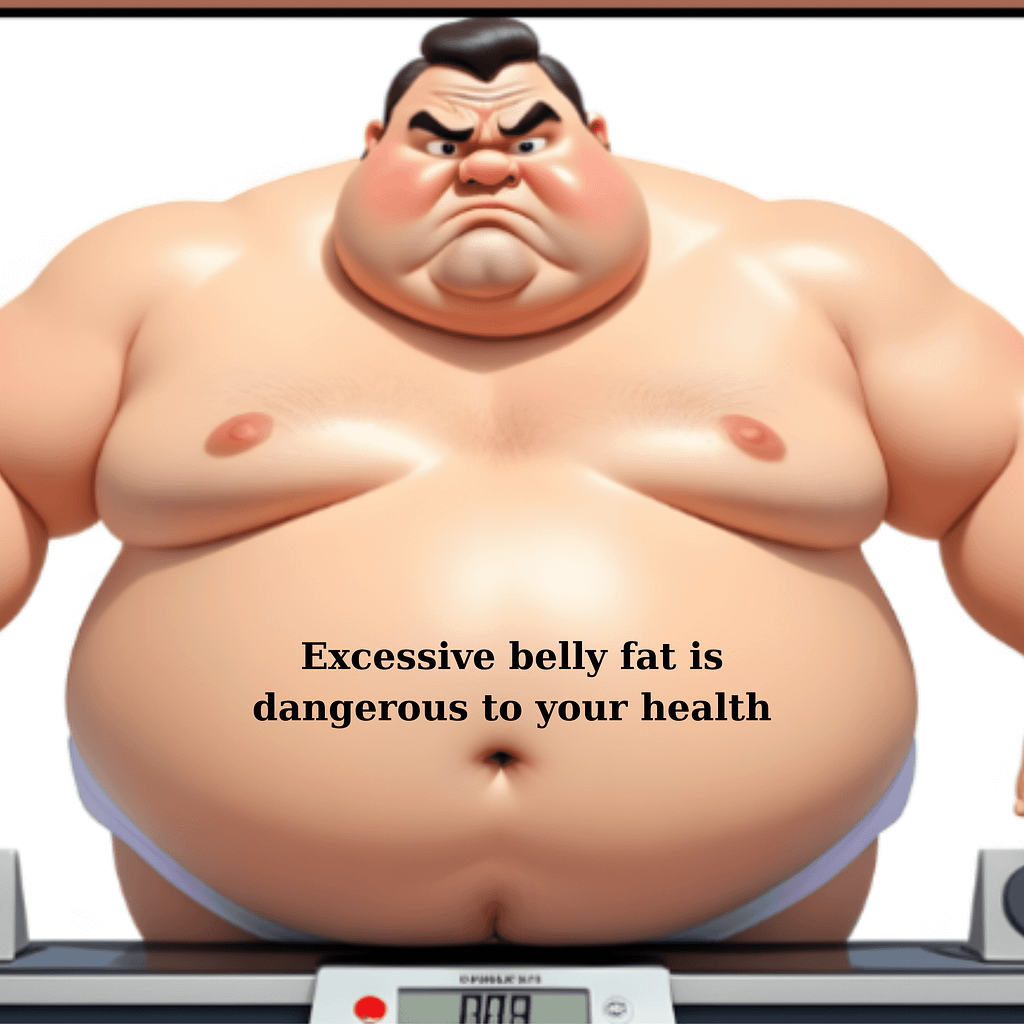
Belly fat is an excessive, abnormal fat buildup. The worst kind of belly fat is visceral fat (buried deep into your body, you can´t see or touch it like subcutaneous fat), located dangerously close to your organs and whose presence is enough to attract a host of chronic diseases.
Subcutaneous fat is located directly beneath the skin´s surface. Excessive amounts of subcutaneous fat can also increase the risk of chronic diseases.
A sedentary lifestyle, high-fat/sugary meals, heredity, and hormones can impact abdominal fat accumulation.

The Underlying Dangers of Belly Fat
Excessive abdominal fat disrupts the normal function of hormones in the stomach and causes a slew of unwanted ailments and challenging conditions, such as,
- digestive disorder (disrupts the normal operation of organs)
- decline in testosterone levels (can impact mood, energy levels, and muscle mass)
- increase the risk of high blood pressure
- joint problems (excess weight puts unnecessary stress on joints)
- increase risk of heart ailments (higher levels of LDL cholesterol and triglycerides)
- increase risk of type 2 diabetes (link between abdominal fat and insulin resistance)
- affect lung function (risk of respiratory issues in older men)
- increase risk of cancer (colorectal and other cancers),
- and chronic pain (reduces quality of life).
The Benefits of Healthy Living
Healthy lifestyle changes can turn your situation around dramatically. If you tweak your nutritional diet (foods rich in vegetables, fruits, and other wholesome foods) and incorporate exercise 3x a week, these will do wonders to turn your situation around.
These foods can help burn belly fat:
- artichokes,
- eggs,
- coconut oil,
- avocados,
- sunflower seeds,
- peas,
- quinoa,
- chia seeds,
- lentils,
- kimchi,
- kombucha,
- kefir,
- green tea,
- and fiber-rich foods.
It is best not to eat more calories than you burn. Try to keep track of your waist circumference; do not let it exceed 42 inches. Another helpful approach is to measure your hip ratio and divide it by your waist circumference. Anything higher than 1.0 could mean trouble ( ideal 0.95).
In the US alone, the Midwest (35.8%) and South (38.6%) have the highest obesity rates. The Northeast comes in with 30.5% and the West at 29.9%.
The average waist circumference in males based on age.
Age
20-29
30-39
40-49
50-59
Waist Circumference in inches
37.1
40.4
41
41.4

Eliminate belly fat and reduce your chances of developing chronic diseases today.
You may also like:
Men, Aging, and Hormones – MenMatters
Hormonal imbalances in men: What you need to know – MenMatters
Shed Pounds Quickly and Safely: For Those Who Struggle with Weight Loss – MenMatters
